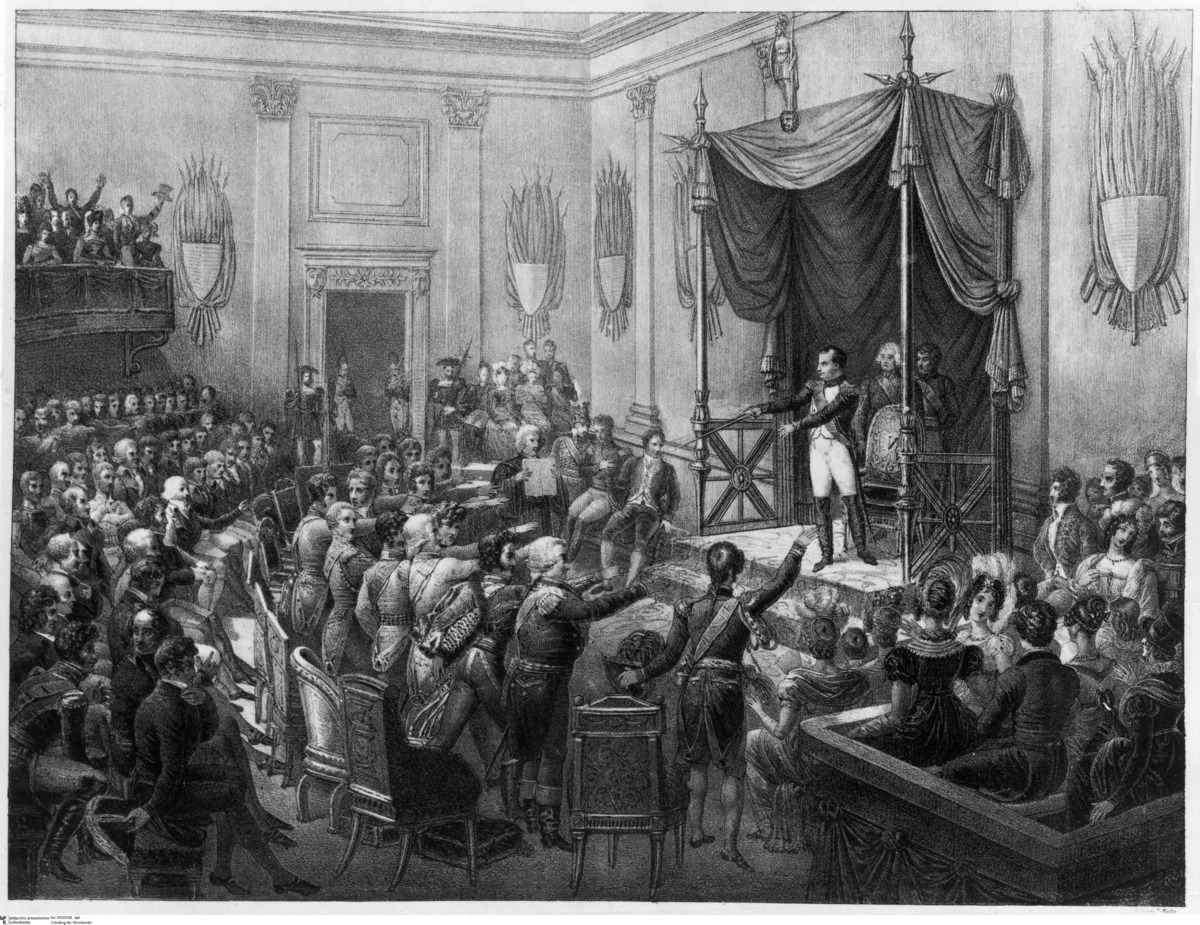Abstract
After Napoleonic France, aided by the southern German states of
Bavaria, Baden, and Württemberg, defeated the Austrian Empire and its
allies in the War of the Third Coalition in 1805, Napoleon (r.
1804-1814/15) brought about the dissolution of the Holy Roman Empire. He
did so by promoting the establishment of the Confederation of the Rhine,
which comprised sixteen southern and southwestern German imperial
estates. This lithograph shows the signing of the Treaty of the
Confederation of the Rhine
[Rheinbundakte] on July 12, 1806. The
treaty was signed by the principalities and Napoleon, who assumed a
protectorate over this new political body. The participating princes
renounced their association with the Holy Roman Emperor and declared
their sovereignty. At the time, Holy Roman Emperor Francis II (r.
1792-1806) was already under growing pressure by Napoleon, and this,
together with the founding of the Confederation, forced him to abdicate
the throne and proclaim the dissolution of the Holy Roman Empire.
